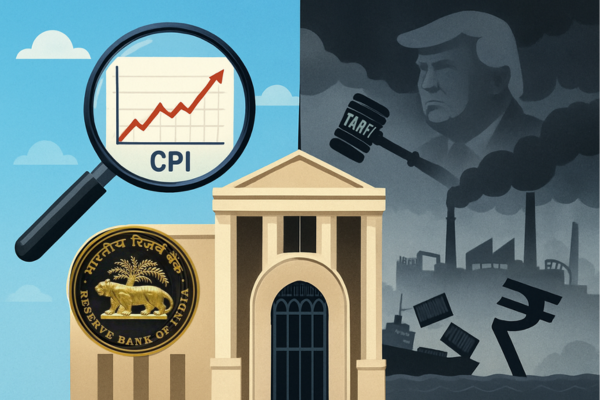.png)
Time for RBI to Recount, Reset
Beyond the rate call, the October review must recount what has been done, what was achieved, and set the compass for policy in the year ahead.

Groupthink is the House View of BasisPoint’s in-house columnists.
September 30, 2025 at 10:23 AM IST
In the days leading up to every Monetary Policy Committee meeting, attention is consumed by speculation over whether the Reserve Bank of India will cut rates, hold steady, or lean dovish. That preoccupation with tactical choices is inevitable, yet it risks missing the larger issue, particularly this time.
What matters now is not only what the governor and the committee decide on Wednesday, but the orientation they may signal for steering policy through the coming quarters.
The thrust of policy may be very different from where it stood six months ago.
The RBI saw room to cut rates earlier in the year, then front-loaded easing in June. That decisiveness reshaped the policy setting. But are the outcomes matching the intent? Have transmission and economic gains kept pace with the RBI’s objectives?
Since February, the RBI has cut policy rates by 100 basis points, eased liquidity through a matching cut in the cash reserve ratio, and sought to anchor expectations around inflation. Yet the bond market has not rewarded these moves; yields have drifted higher since June despite the front-loaded easing. The disconnect signals that transmission has been overshadowed by communication.
By appearing to signal that the easing cycle was complete, the RBI created an impression of closure. That rigidity unsettled markets more than the decision itself. The opposite of what was intended may, in fact, have played out.
For the October review, the governor could consider articulating the playbook.
An honest accounting of what was intended, what has been achieved, and some articulation of where to go from here could create greater alignment with the market. Beyond the rate decision, the October policy must re-establish the thrust of the monetary strategy for the months ahead.
The RBI was sure-footed in June, but the current milieu calls for greater adaptability.
The task now is to steer through a mixed picture, where headline inflation looks benign but underlying factors, like core, remain sticky, and where real growth has surprised on the upside even as nominal growth trends lower.
Smell Test
This is where intuition could come in.
Models and forecasts are indispensable, but they can miss the nuances of an economy in transition and the psychological aspects at play. The governor’s job may not only be to read the gauges but also to sense the movement and direct the path. To borrow an analogy, the speedometer may show 80 KMPH, but the feel of the road may suggest closer to 50 KMPH. The smell test, weighing anecdotal signals, transmission frictions and sentiment shifts, could provide the bridge between what the numbers say and what the economy feels like.
That does not mean abandoning evidence. Intuition is not a substitute but a complement. It may allow the central bank to weigh conflicting signals, sense external headwinds that the models may not capture, and avoid locking into rigidity when conditions are fluid.
In this sense, the October meeting is not just about a rate decision. It could be about setting a compass for the next year, indicating how the RBI intends to balance the competing demands of growth, inflation, and stability. A single action can be reversed or discounted. A coherent orientation, clearly articulated, might shape expectations far more durably.
There is also a broader context.
Monetary and fiscal policy, together, have created the enabling conditions for recovery. The RBI has eased and the government has cut taxes. Liquidity appears ample. What remains uncertain is how businesses and households will respond, and whether demand will follow. That response cannot be forced by further cuts. The governor’s role now is less to engineer demand directly than to signal confidence in an orientation that is both credible and adaptable.
A self-evaluation at this stage may be the first step toward aligning markets more closely with intentions and potential outcomes.
For October, markets may have already priced in a dovish pause. A 25-basis-point cut would not surprise them either. What they will listen for is tone: not simply whether the repo rate moves or stays, but how the RBI recounts past actions, frames current challenges, and sets the compass for the quarters ahead.
Also read:
RBI Must Cut Rates Now, Not Wait Until December
RBI Should Stay on Hold in October to Preserve Stability
Monetary Policy Should Look Beyond Repo Rate Cut
India’s Wage Malaise Leaves RBI Little Room to Hide



